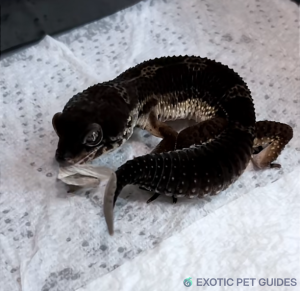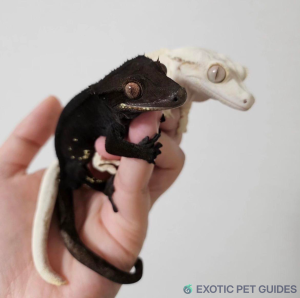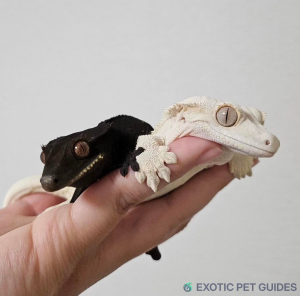How to Keep Your Scaled Companion Happy and Healthy
Geckos are fascinating, low-maintenance reptiles—but like any pet, they’re not immune to illness. The good news? Most gecko diseases are entirely preventable with the right care, attention, and environment. Whether you’re a first-time gecko owner or a seasoned herp enthusiast, understanding how to prevent disease is the key to a long, healthy life for your pet.
Here’s your complete guide to keeping your gecko in peak condition—year-round.

🧼 1. Prioritize Cleanliness
Geckos may be small, but their enclosures can become breeding grounds for harmful bacteria if neglected.
Cleanliness Tips:
- Spot-clean daily: Remove uneaten insects, feces, and shed skin
- Deep-clean monthly: Disinfect the entire enclosure with a reptile-safe cleaner
- Wash hands before and after handling to prevent pathogen transfer
- Quarantine new geckos for at least 30 days before introducing them to a shared space
🚫 Avoid: Using harsh chemicals like bleach without proper dilution or rinsing.
🌡️ 2. Maintain Proper Temperature and Humidity
Inappropriate environmental conditions are one of the most common causes of illness.
Vital Ranges (Species May Vary):
- Leopard Geckos:
- Warm side: 88–92°F (31–33°C)
- Cool side: 75–80°F (24–27°C)
- Humidity: 30%–40%
- Crested Geckos:
- Temps: 72–78°F (22–25°C)
- Humidity: 50%–70%
Use digital thermometers and hygrometers to monitor conditions accurately. Poor temperature can lead to metabolic disorders, while low humidity can cause shedding problems.
🌡️ Tip: Invest in a thermostat to regulate heat sources safely.
🥗 3. Offer a Balanced, Nutritious Diet
Just like us, geckos need proper nutrition to thrive and fight off disease.
Insectivorous Geckos (e.g., Leopard, Fat-Tailed):
- Crickets, dubia roaches, black soldier fly larvae
- Occasional waxworms or mealworms (high fat = treats only)
- Gut-load insects 24 hours before feeding
Frugivorous Geckos (e.g., Crested, Gargoyle):
- Commercial gecko diet (Repashy, Pangea)
- Supplement with mashed fruits occasionally
🧂 Supplement with calcium + D3 and multivitamins 2–3x per week to prevent metabolic bone disease (MBD).
🦶 4. Prevent Shedding Issues
Improper humidity and dehydration can lead to retained shed, especially on toes and tails.
Prevention Tips:
- Provide a humid hide filled with moist sphagnum moss
- Mist enclosures regularly (especially in drier climates)
- Ensure clean water is always available
If stuck shed appears, a warm soak or gentle removal with a moist cotton swab can help—never pull dry skin forcefully.
👀 5. Watch for Early Signs of Illness
Catching symptoms early can make the difference between a quick recovery and a serious issue.
Red Flags:
- Lethargy or hiding excessively
- Loss of appetite
- Weight loss (check tail thickness)
- Sunken eyes
- Runny or unusually colored droppings
- Stuck shed or limb swelling
- Wheezing, clicking, or open-mouth breathing
📞 Contact a reptile vet immediately if you observe any of the above.
🦠 6. Avoid Cross-Contamination
If you keep multiple reptiles, treat each enclosure as its own ecosystem.
Guidelines:
- Use separate tools for each tank (tongs, bowls, hides)
- Wash hands between handling different geckos
- Don’t reuse feeders between tanks
- Quarantine sick or new geckos away from others
🧪 7. Get Regular Health Checks
Even if your gecko looks healthy, an occasional vet visit is wise.
✅ Annual wellness exams can catch parasites or deficiencies before they become serious. Fecal exams are especially useful to detect internal parasites, which can be asymptomatic at first.
🧠 8. Learn Your Gecko’s Normal Behavior
Each gecko has its own rhythm—once you know what’s “normal,” it’s easier to spot when something’s off.
Pay attention to:
- Feeding habits
- Activity levels
- Favorite hiding spots
- Shedding schedule
- Reaction to handling
Keeping a care journal can help track changes over time.
📝 Final Thoughts
Geckos are hardy, charming reptiles—but preventative care is key to their health and happiness. By creating a clean, well-balanced, and species-appropriate environment, you can reduce the risk of disease and help your gecko live a long, thriving life.
🦎 Healthy geckos are active, alert, have bright eyes, and shed cleanly—anything else deserves a second look.

